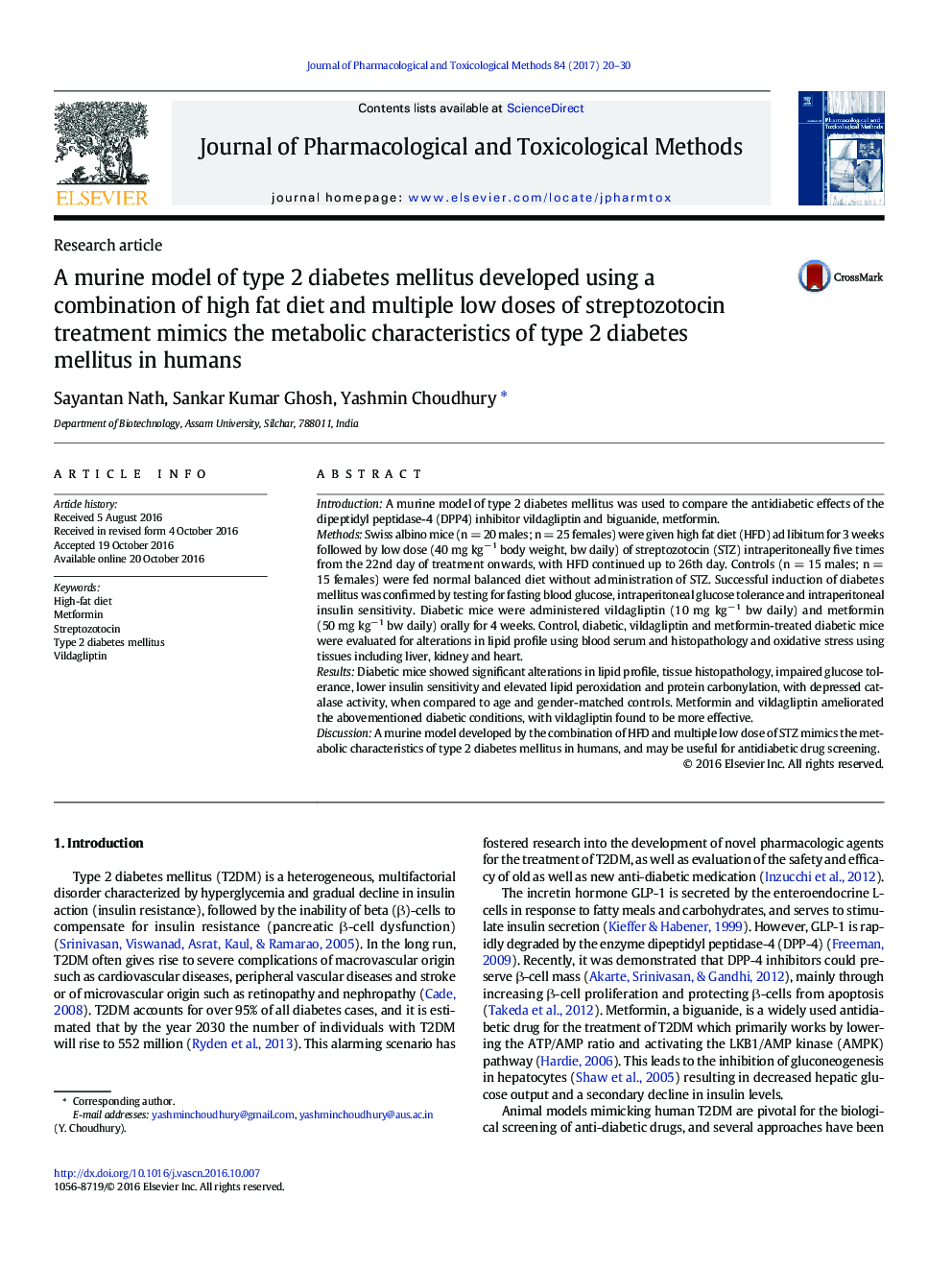| Article ID | Journal | Published Year | Pages | File Type |
|---|---|---|---|---|
| 5556547 | Journal of Pharmacological and Toxicological Methods | 2017 | 11 Pages |
IntroductionA murine model of type 2 diabetes mellitus was used to compare the antidiabetic effects of the dipeptidyl peptidase-4 (DPP4) inhibitor vildagliptin and biguanide, metformin.MethodsSwiss albino mice (n = 20 males; n = 25 females) were given high fat diet (HFD) ad libitum for 3 weeks followed by low dose (40 mg kgâ 1 body weight, bw daily) of streptozotocin (STZ) intraperitoneally five times from the 22nd day of treatment onwards, with HFD continued up to 26th day. Controls (n = 15 males; n = 15 females) were fed normal balanced diet without administration of STZ. Successful induction of diabetes mellitus was confirmed by testing for fasting blood glucose, intraperitoneal glucose tolerance and intraperitoneal insulin sensitivity. Diabetic mice were administered vildagliptin (10 mg kgâ 1 bw daily) and metformin (50 mg kgâ 1 bw daily) orally for 4 weeks. Control, diabetic, vildagliptin and metformin-treated diabetic mice were evaluated for alterations in lipid profile using blood serum and histopathology and oxidative stress using tissues including liver, kidney and heart.ResultsDiabetic mice showed significant alterations in lipid profile, tissue histopathology, impaired glucose tolerance, lower insulin sensitivity and elevated lipid peroxidation and protein carbonylation, with depressed catalase activity, when compared to age and gender-matched controls. Metformin and vildagliptin ameliorated the abovementioned diabetic conditions, with vildagliptin found to be more effective.DiscussionA murine model developed by the combination of HFD and multiple low dose of STZ mimics the metabolic characteristics of type 2 diabetes mellitus in humans, and may be useful for antidiabetic drug screening.
